Walls are not Unidirectional
All the effects of a wall, given its cost, needs to be taken into consideration.
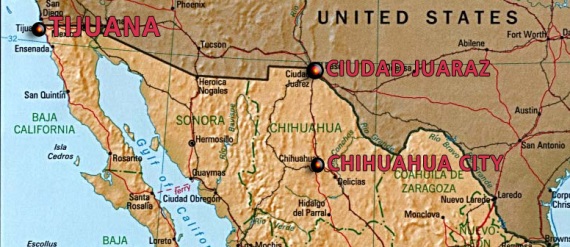
Via The Atlantic: An Unintended Side Effect of Trump’s Border Wall
In their popular song “Jaula de Oro,” which translates to “Cage of Gold,” the famous Mexican band Los Tigres del Norte tells the story of a migrant who finds himself unable to move across the U.S.-Mexico border. His lack of mobility does not keep him in Mexico, as one would expect, but in the United States.
Indeed, as the article points out, we have known this since the implementation of the 1986 Immigration Reform and Control Act: more border security leads to more undocumented immigrants staying in the US rather than coming to work for a period of time and returning to Mexico. Indeed, it is one of the reasons that there are millions of undocumented persons permanently residing in the US: the dissolution of a more open border incentivized the creation of lives here in the US. Indeed, it disincentivizes return more than entry because the risk of getting caught coming in is simply not getting in, but getting caught leave could jeopardize economic and familial connections already established in the US.
One of IRCA’s primary measures was to increase the enforcement budget of the Immigration and Naturalization Service. As a result, crossing the national boundary became a much more dangerous and expensive enterprise. To avoid detection, migrants had to pay smugglers to help them get across hazardous terrains that were less patrolled.
Despite the new hardships of migration, relatively few Mexicans reconsidered their decision to head north. On the contrary, the numbers of undocumented migrants continued to grow. While in 1986, an estimated 3.2 million unauthorized migrants lived in the United States, the number reached 5 million in 1996, and grew to approximately 11 million in 2006.
Despite the increased fortification of the border, Mexicans continued going to the United States because of economic need. After all, the passage of IRCA did nothing to alter the low wages and high underemployment rates in Mexico. However, as sociologist Douglas Massey and others have shown, as crossing the border became increasingly hard after 1986, most migrants started refraining from going back and forth between the two countries and instead decided to settle permanently in the United States.
And, of course, it has to be remembered that a large percentage (roughly 40%) of the undocumented are visa over-stayers. That is: they legally crossed the border, but they did not leave when they were supposed to. Even with a huge, beautiful all the likes of which no one has ever seen, this will still happen, as immigrant will either pass over it via plane or through in via a gate. A terrific, amazing wall will not change the fact that once here many will then be less likely to leave for fear of not being able to get back in, or for fear of running afoul of law enforcement at the border. An important side-note on the visa over-stayer issue: their existence really destroys the notion that a wall would as efficacious as claimed.
One of the ironies of the IRCA is that it was partly created to enhance border security (sound familiar?) and it did, as noted. But that then created the conditions for migrant workers to remain in the US, leading to the unintended consequence of nearly 12 million undocumented persons residing in the US.
Note, for example, this graph:
Of course, the graph also shows that the numbers in question has been stable for going on a decade (which may suggest either we are at the end of some specific economic era, or it may be the border is as secure as it is going to get and therefore additional expenditures are fiscal foolishness).
As such, the effects of a wall, given its cost, needs to take into consideration both the effects that might actually counter said wall’s policy goals, as well as asking what problem it is actually solving. Yes, I know that many (most) proponents of the wall are not amendable to such deliberative approaches, but nonetheless, reality is what it is.


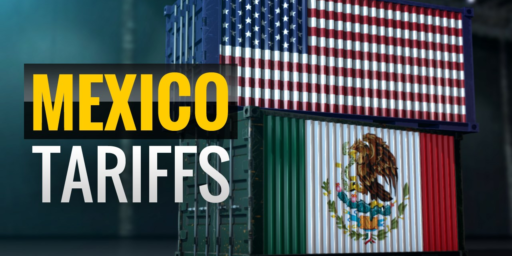
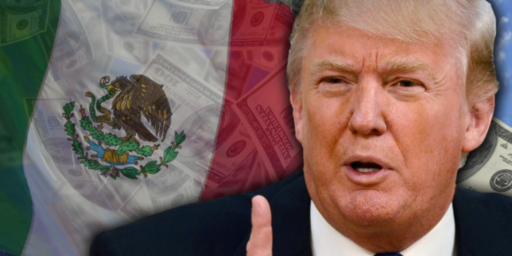
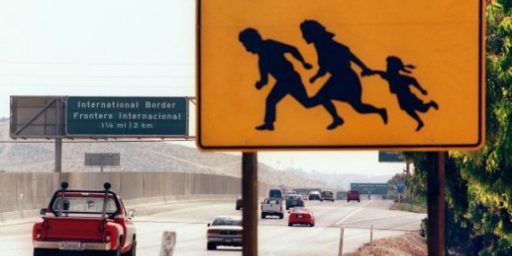
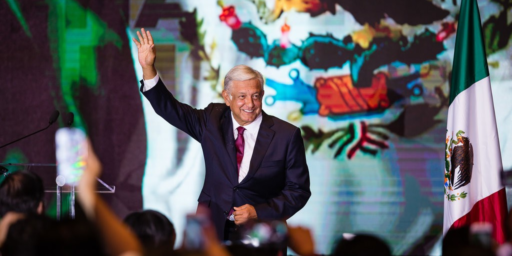
I don’t think Trump’s base cares if it works; they want a wall to express their contempt for, and superiority over, brown people.
This seems like a very solvable problem. Would Trump’s base be ok with “Amnesty At The Exit Door”?
@michael reynolds: Not only doesn’t it appear that DJT cares if it works, I doubt that he cares what it costs.
OTOH, Congress should care if 20 billion is being spent to accomplish anything besides fulfilling a campaign slogan.
@Bob@Youngstown:
Oh, Trump has assured us–via Twitter, natch–that the cost will be far, far less than projected once he gets involved in the negotiations.
As to whether the wall actually gets built, I’m not sure if the Trumpkins will care. (Most of them may have forgotten about it by now, since they have about the same memory and attention span as Trump himself. ) They elected Trump to avenge themselves against the”elites,” said “elites” being anyone of any political inclination who conducts him or herself as a civilized, rational human being.
Trump will build the Gross Wall because he needs it to keep his base fired up. But Trump is a con artist. I’m expecting a few miles of impressive wall somewhere highly visible, some improvements to existing walls and fences, and a few high tech bells and whistles. Trump will call it his promised Wall, he’ll brag it came in cheap because of his mighty negotiating skills, rather than from being built on the cheap, and the Mighty Right Wing Wurlitzer will back him up. I’ll worry about the economic and diplomatic (and substantial environmental) unintended consequences of the Wall when I start believing it might ever actually exist.
“Wall” has many problems formerly offensive to our conservative friends.
Cost: Adding more to the debt already, are we?
Effectiveness: Tunnels pay for themselves on the first run. Drones which lift up to 300 pounds are also catching on. Even old-fashioned ladders still work.
Eminent Domain: Thousands of private citizens will have their properties taken by the government .
Texas: GOP Rep Will Hurd of district 23, which covers 800 miles of Rio Grande, has called”wall ” low on his list of priorities.
Arizona: The sovereign T’hono Odom people own a 75 mile section of the border, as drawn. Fencing that off effectively cedes a huge amount of land to Mexico.
California: Jerry Brown has already threatened to tie up “wall” in court.
In court is where most of “wall” money will be spent. No actual wall is feasible, desired, or needed.
@James in Bremerton:
John Cornyn was also quoted this weekend poo-pooing the wall, saying it was very low on the priority list of Texans.
Los Tigres del Norte actually formed in San Jose California, their founding members all Americans who immigrated here as children. Actuallly they are a great immigrant success story–global superstars who made their fame and fortune in the US
The push back against the wall is getting louder here in Texas. First and foremost, it creates a huge eminent domain issue. Property rights are vigorously defended here. Folks have owned their land along the border for many generations, some predating the Republic.
The ability of Trump to consider un-intended consequences seems extremely limited. The man devastated Atlantic City with un-intended consequences. It also makes me think of Hawaii.
From Wikipedia:
Spending upwards of $20B just to make a bunch of rednecks feel good about putting it to “others” seems like a ridiculous expenditure to me. But then I’m far more Conservative than today’s Republican.
I don’t know why you people are all worried about the $20B cost, he said Mexico was paying for it!
More than $20B. Probably would end up closer to $100B after including the non-working, electronic surveillance technology we’ll just have to install.
Oh the heck with it–someone head over to China and take some snapshots of the Great Wall, then we can have Hollywood do its magic with green screens and computer graphics to create something to show to the rubes.
They want a wall? We’ll give them a wall. The fact that it’s all digital magic is irrelevant. None of the wall-wanters are going to have enough gumption to travel far enough down in Texas to take a look at it anyway. And if any of them do, we can always have a paper-mache one put up by the special-effects team so the Trumpenproletariat can take selfies in front of it.